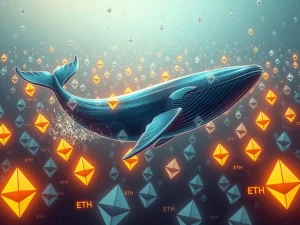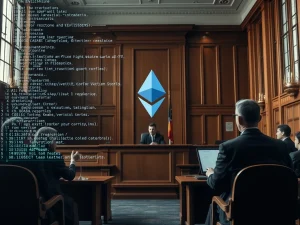MiCA Law: Europe’s Urgent Crypto Compliance Challenge Unfolds

The landscape for digital assets in Europe is undergoing a significant transformation. At the heart of this change is the **MiCA law**, the European Union’s landmark regulation for the crypto sector. This comprehensive framework is now entering a critical phase, prompting firms across the industry to assess their strategies and operations. But can the crypto world truly keep pace with this sweeping regulatory wave?
Understanding the Core of EU Crypto Regulation
The Markets in Crypto-Assets (MiCA) regulation aims to create a unified legal framework across all 27 EU member states. Its primary goals include fostering clarity, protecting consumers, and ensuring long-term market stability. The implementation is phased, with key provisions now in force. As of January 2025, crypto asset service providers (CASPs) are required to obtain licenses to operate legally within the EU. A transitional period, lasting up to 18 months depending on the member state, allows existing firms time to adapt and seek authorization. However, with deadlines approaching, the pressure to achieve **crypto compliance Europe** is mounting.
The Impact of MiCA Stablecoin Rules
One of MiCA’s most immediate and impactful areas of focus is **stablecoin regulation EU**. Under the new rules, stablecoins can only be offered to EU users if the issuer is authorized within the EU and has a regulator-approved white paper. Strict requirements are placed on asset reserves, governance, conflict of interest management, and marketing practices. Notably, issuers are prohibited from offering interest on stablecoins, removing a common incentive for their use.
This specific provision is already redrawing the market. Tether, issuer of the world’s most widely used stablecoin, USDt (USDT), has announced it will not seek **MiCA stablecoins** compliance. This decision could force exchanges to delist USDt in the EU, potentially impacting liquidity, retail access, and DeFi activity in the region. Tether CEO Paolo Ardoino commented on their position, stating their concerns weren’t about fear of regulation but rather the perceived danger of the stablecoin licensing framework, particularly for smaller banking systems in Europe.
Navigating the Path to MiCA Compliance Europe
While some firms are pausing their EU stablecoin operations, others are actively embracing **crypto compliance Europe**. BitGo, a crypto custody provider, recently secured a MiCA-aligned license in Germany. This move positions them to serve institutional clients across Europe under the new rules. Brett Reeves, head of Go Network and European Sales at BitGo, views this licensing not just as a requirement but as a strategic alignment with Europe’s evolving regulatory environment. He noted positive interactions with German and European regulators throughout the process.
The successful implementation of the **MiCA law** ultimately hinges on consistent interpretation and guidance at the national level. Erwin Voloder, head of policy at the European Blockchain Association, highlights the need for clarity from regulators to prevent fragmentation across member states.
What Comes Next for MiCA Stablecoins and Beyond?
The rollout of **MiCA stablecoins** rules is just one piece of the puzzle. As the regulation fully comes into effect, the entire spectrum of crypto asset services, from exchanges to custodians, will need to adapt. The differing responses from major players like Tether and BitGo illustrate the varied approaches the industry is taking. The next few months will be crucial in observing how the market adjusts, how regulators provide further guidance, and whether the EU achieves its goal of a unified, stable, and consumer-protected crypto market under the **EU crypto regulation**.
In conclusion, Europe’s MiCA law presents both significant challenges and clear opportunities. While the path to full **crypto compliance Europe** may be complex, the push for regulatory clarity is undeniable. The industry must navigate these new rules to continue operating and innovating within the European Union.









